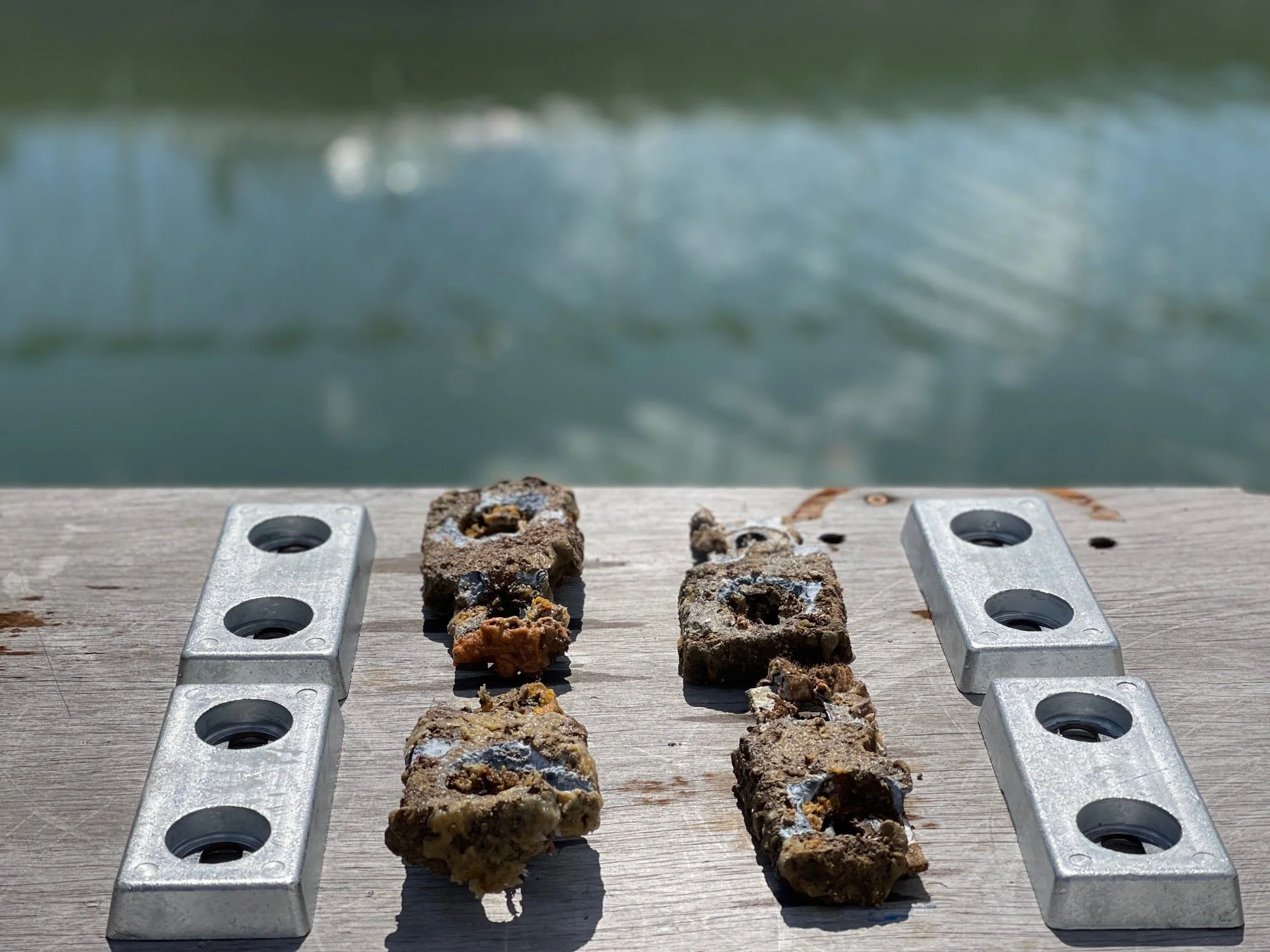Protect Your Investment: The Vital Role of Anodes in Boat Maintenance
Anodes changed in water by our divers
Boat ownership is a thrilling adventure, but it also comes with a significant responsibility: maintenance. One crucial aspect of maintaining a boat often overlooked by many owners is the regular inspection and replacement of sacrificial anodes, often referred to as "zincs." These unassuming pieces of metal play a vital role in preserving your vessel and ensuring it remains seaworthy. In this article, we'll delve into the importance of checking and replacing your anodes to safeguard your boat and your investment.
Understanding Sacrificial Anodes:
Sacrificial anodes are typically made of zinc, aluminum, or magnesium and are strategically placed on a boat's hull and other submerged metal parts. These metals are less noble than the other metals found in a boat's construction, such as steel or aluminum. As a result, they corrode or erode more readily when exposed to the corrosive forces of seawater.
The Purpose of Sacrificial Anodes:
Corrosion Prevention: The primary function of sacrificial anodes is to protect the boat's essential components from galvanic corrosion. This type of corrosion occurs when dissimilar metals are in direct contact with seawater. When sacrificial anodes corrode, they divert the corrosive process away from critical parts like the propeller, shaft, rudder, and hull.
Preservation of Critical Components: By sacrificing themselves, anodes ensure that expensive and essential boat components remain intact and functional. Without proper protection, corrosion can weaken or even destroy these vital parts, leading to costly repairs or replacements.
Safety: Beyond financial considerations, the safety of you and your passengers is paramount. A well-maintained boat is less likely to experience unexpected failures or accidents caused by corrosion-related issues.
When and How to Inspect Anodes:
Regular inspections of sacrificial anodes are essential to catch any signs of wear or degradation early. Here are some guidelines to follow:
Frequency: Check your anodes at least once every few months or, ideally, during routine maintenance intervals. In saltwater environments, more frequent inspections may be necessary.
Visual Inspection: Look for signs of erosion, pitting, or excessive wear on the anodes. If they appear significantly depleted or damaged, it's time for a replacement.
Loose or Missing Anodes: Ensure all anodes are securely fastened to the boat. Loose or missing anodes won't provide proper protection.
Location Matters: Be aware of the specific locations of anodes on your boat. Common places include the hull, propeller shaft, outboard motors, and heat exchangers.
Replacing Sacrificial Anodes:
When it's time to replace your anodes, follow these steps:
Select the Correct Anodes: Make sure you purchase anodes that are compatible with your boat's materials and the type of water (salt or freshwater) in which it operates.
Clean the Attachment Points: Remove any corrosion or debris from the attachment points to ensure a good connection.
Securely Install New Anodes: Fasten the new anodes firmly in place, ensuring they make solid contact with the metal components they are meant to protect.
In conclusion, the often-overlooked sacrificial anodes play a vital role in preserving your boat's integrity and preventing costly repairs. Regular inspections and timely replacements are crucial to ensure they continue to provide effective protection. By taking this simple yet essential step in boat maintenance, you can extend the life of your vessel, enhance safety, and protect your investment on the open water.

